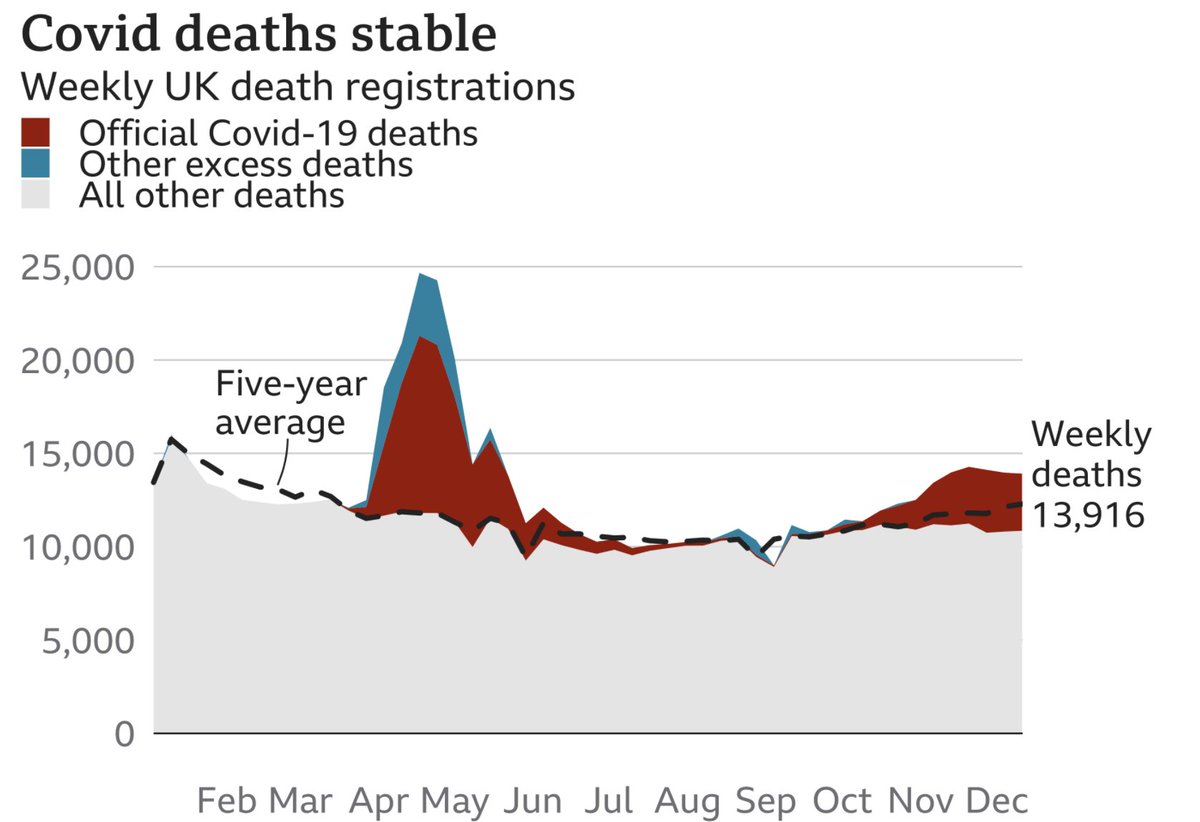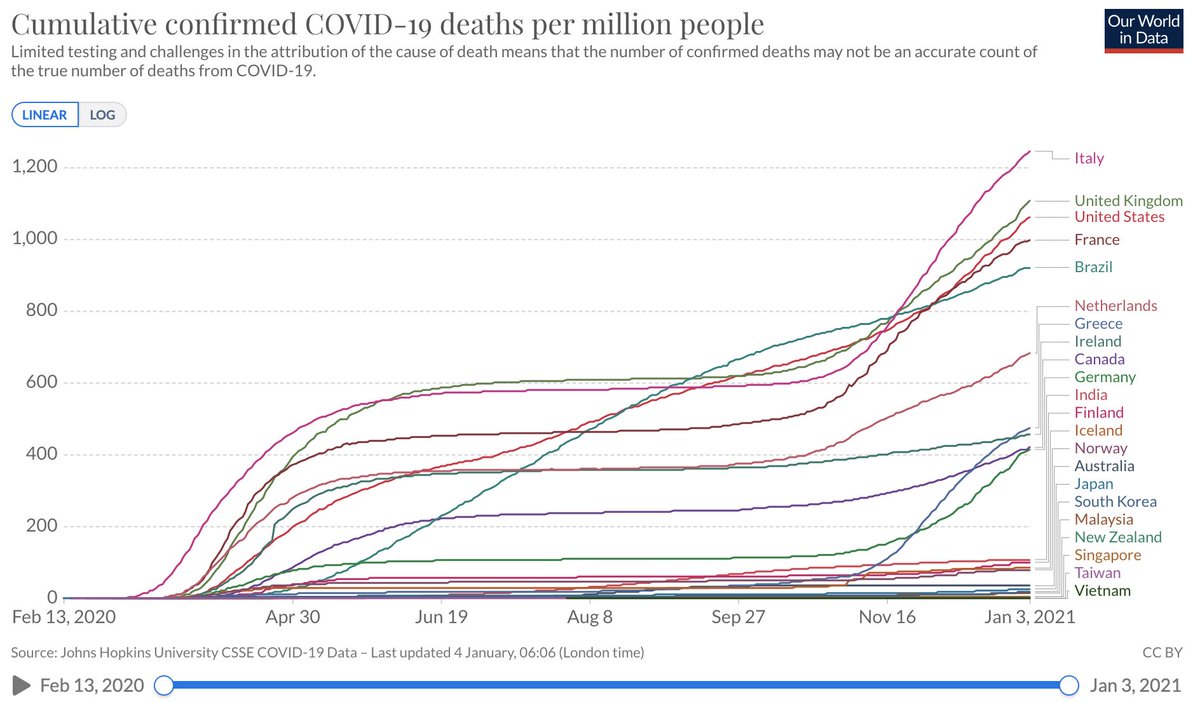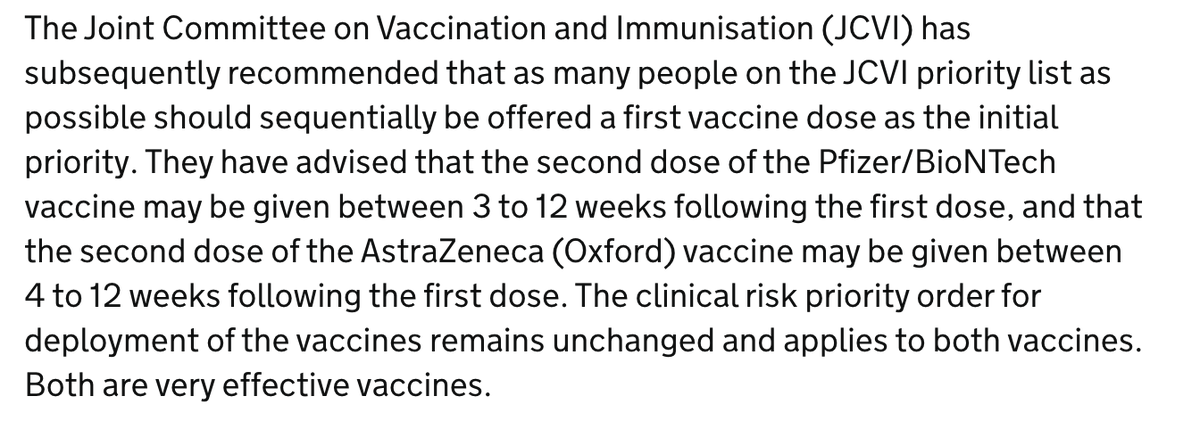This is the exact problem with our government's thinking & response- despite this strategy of 'tolerating deaths' and half-way measures having spectacularly failed, it's quite amazing that our govt still hasn't learned anything, & continues to promote a policy of death. Thread
U.K. needs to confront
— Esther McVey (@EstherMcVey1) January 2, 2021
\u2018The challenge that faces us is to decide - are we going to try to pursue the elimination of Covid-19 regardless of the costs or decide on a tolerable level of deaths (like we do with the flu) in order to return to a normal life?\u2019
https://t.co/9hWbHIPJUq
https://t.co/VPqJBbkFik


The govt has completely failed us & their continued pursuit of pseudoscience will cost many more lives.
More from Deepti Gurdasani
Questions have to be asked about the evidence Jenny Harries gave to the Education Committee today about the risk to teachers.
— Adam Hamdy (@adamhamdy) January 19, 2021
Was she aware of this data?
If not, why wasn\u2019t she properly briefed?#COVID19 #schools https://t.co/4wa1PyAJld pic.twitter.com/eqFjaA1zYC
data shows *both* primary & secondary school teachers are at double the risk of confirmed infection relative to comparable positivity in the general population. ONS household infection data also clearly show that children are important sources of transmission.
Yet, in the parliamentary select meeting today, witnesses like Jenny Harries repeated the same claims- that have been debunked by the ONS data, and the data released by the @educationgovuk today. How many lives have been lost to these lies? How many more people have long COVID?
has repeatedly pointed out errors & gaps in the ONS reporting of evidence around risk of infection among teachers- and it's taken *months* to get clarity on this. The released data are a result of months of campaigning by her, the @NEU and others.
Rather than being transparent about the risk of transmission in school settings & mitigating this, the govt (& many of its advisors) has engaged in dismissing & denying evidence that's been clear for a while. Evidence from the govt's own surveys. And global evidence.
Why?
First, there is strong evidence to support increased transmissibility of B117 - current estimates of increased transmissibility range between 30-70% - from epidemiological evidence examining the differential rate of growth of B117 with respect to other variants & increase in R
There is also evidence from PHE contact studies that the risk of transmission from those carrying the B117 variant is ~50% greater than with other non-B117 variants.
Increased transmissibility, even if a variant has the same fatality rate can increase deaths substantially, because the rate of growth of cases is higher- & more cases means more deaths.
Increased fatality rates also increase deaths- but do so
How dangerous are the B.1.1.7 and 501Y.V2 hyper-transmissible strains?
— Eric Topol (@EricTopol) January 11, 2021
by @AdamJKucharski @CFR_orghttps://t.co/aycWMN3b5h
h/t @Karl_Lauterbach pic.twitter.com/JlaFzzP06t
So how was risk of death with the variant studied?
We don't routinely sequence all samples for the virus. We've found that the variant has a particular deletion which means that some PCR tests on samples with the variant give a different read-out when the variant is present.
More from Government
Biden says "small classes". What we need to understand is how they plant to accomplish this.
Through "childcare programs in schools". We see this all over states w/ closed schools.
Today, our first working day, @JoeBiden signed an Executive Order on safely reopening childcare programs in schools - @DrBiden pic.twitter.com/J4vZk5ZAaS
— AFT (@AFTunion) January 21, 2021
We need to grasp that the AFT, NEA, & local unions are systematically working to decouple education from childcare.
Their vision is your child sitting on a device all day, watched by a childcare worker, being "taught" from a Teacher working from
This isn't a paranoid conspiracy theory - it is already happening in the majority of districts across the US where schools are closed.
"Learning Hubs" open, supervised by childcare workers, sometimes in the same "unsafe" school
There is NO OTHER WAY to get "small classes" without Hybrid + wraparound childcare. Your child will spend 2-3 days per WEEK supervised by low wage workers and sitting on a laptop.
Here's
Fairfax,
















